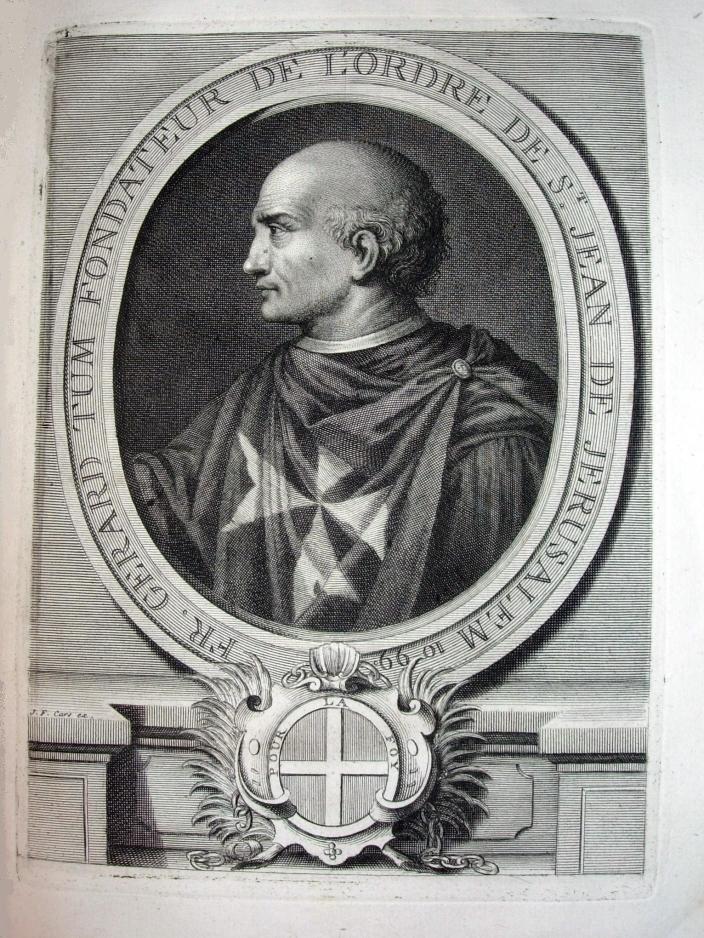“The Knights Hospitaller” by
Helen Nicholson is an excellent overview of the “Sovereign Military Order of St
John of Jerusalem of Rhodes and of Malta”, the rather unwieldy official name of
this fraternity at the present time. Originally, the Knights Hospitaller really
were a Catholic-manned hospital catering to pilgrims in 11th century Jerusalem,
already before the conquest of the city by the crusaders. At some point during
the 12th century, the Hospital became militarized and eventually grew into one
of the “classic” crusading orders, alongside the Templars and the Teutonic
Knights. Apart from defending the crusader states and Cilician Armenia, the
Hospitallers participated in military activity in Spain, Hungary and Poland.
They operated a network of hospitals in both Palestine and Europe. To finance
their military activities, the Knights owned vast estates in Europe, operated
mills, dug mines, bought and sold their products at special markets, and lent
money to kings. Many Hospitallers served as advisors or administrators at royal
courts, and for some time most of the Papal States were administered by local
officials drawn from their ranks.
After being driven out of Palestine by the Muslims, the Hospitallers established themselves first at Cyprus, then at Rhodes and finally at Malta, where they became known as the Knights of Malta. Their main activity during the 16th, 17th and 18th centuries was harassment of Muslim (Ottoman) shipping, interspersed with occasional attacks on the Ottoman-associated Barbary States in North Africa. In 1565, the Ottomans attempted to conquer Malta and destroy the knights, an attempt that spectacularly failed. The Knights of Malta participated in the famous Battle of Lepanto in 1571, when the Catholic powers routed the Ottoman fleet.
Ironically, the Maltese knights were later seen as a nuisance by the Christian states. The Hospitallers often attacked Christian vessels trading with the Muslim Ottomans (especially Venetian ships), or leased out their right to attack Muslim or “pro-Muslim” Christian shipping to people who were no better than pirates. When the Ottoman Empire stopped expanding in Europe, it became an on-off ally to various European powers, who often viewed Russia as a bigger threat. The Knights Hospitaller and their crusading zeal against the infidel had become an embarrassing anachronism. In 1798, Napoleon finally conquered Malta and forced the Hospitallers to leave. For a while, their order was based in Russia under the protection of the Czar! The order still exists and even enjoys extra-territorial status in many countries, but today's “knights” are a purely charitable institution.
A particularly interesting chapter in Nicholson's book deals with the organization and spirituality of the Knights Hospitaller. Apart from the actual knights, the Order had female members serving in the hospitals, and various kinds of supporters and sympathizers. The members of the Order, including the warriors, were supposed to follow the monastic rules of celibacy, poverty and obedience. Those joining the Order were often from the lower knightly class, and hence could use the Order as a path to advancement into the real nobility. The houses of the Order took care of orphans and abandoned children, some of whom joined the knights at adulthood. The Knights Hospitaller also owned Muslim slaves. A Muslim slave who converted to Christianity had to be set free, so the Hospitallers didn't encourage such conversions. Perhaps for this reason, the slaves were permitted to have their own imams! As for Hospitaller spirituality, it's interesting to note that this Catholic Order permitted Protestant branches after the Reformation, and for a period was under the protection of an Orthodox Czar. The main Catholic branches emphasized the cult of holy relics, including those of St John the Baptist, the patron saint of the Order. The relic cult eventually made the Knights of Malta look somewhat archaic even in the Catholic world. More up-to-date was the decision to invite Renaissance and Baroque painters to Malta. Caravaggio painted one of his masterpieces, “The Beheading of Saint John the Baptist” during his stay on the island.
The Knights Hospitaller tend to be overshadowed by the Knights Templar, no doubt because of the aura of mystery and heresy surrounding the latter group. Yet, the Knights of St John actually survived for a longer period and were active at more military theaters. Incidentally, there are conspiracy theories about the Hospitallers, too. Just ask your local unfriendly LaRouchian or Bircher! You won't find the conspiracist subculture in this book, however.
Helen Nicholson's “Knights Hospitaller” fills a gap in this public (non-)perception, and I therefore chivalrously award it five stars.

No comments:
Post a Comment